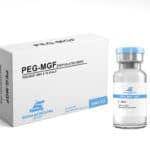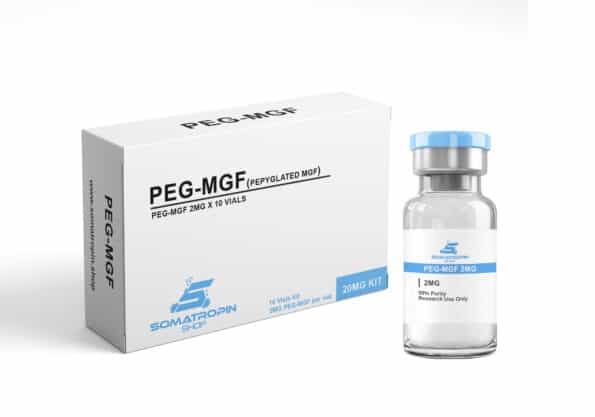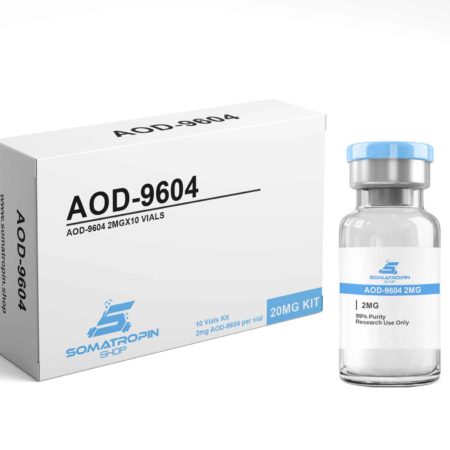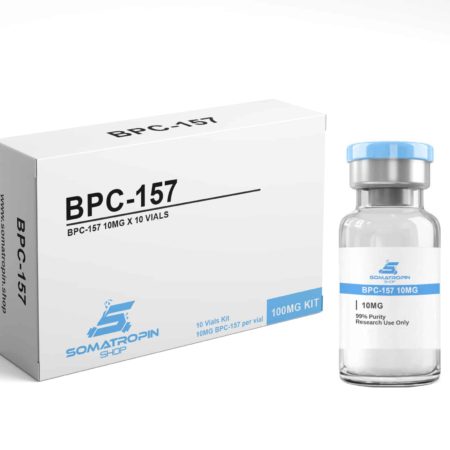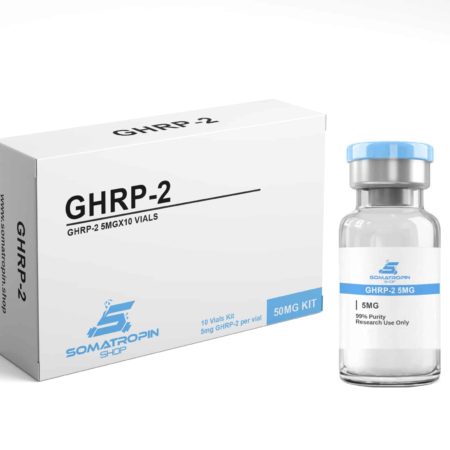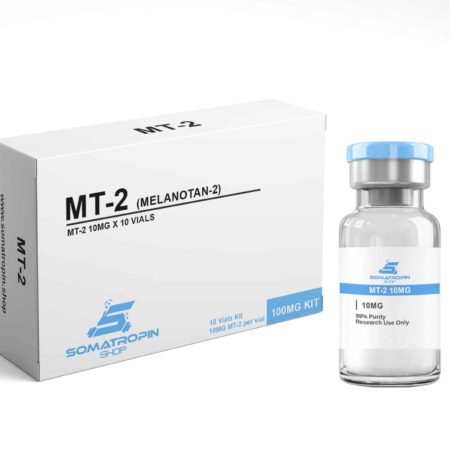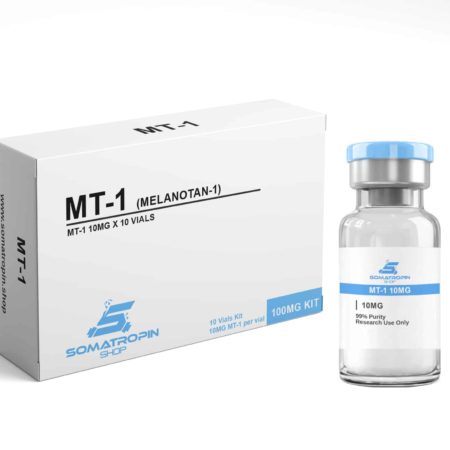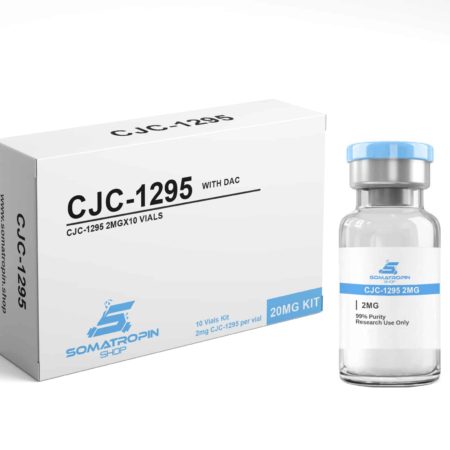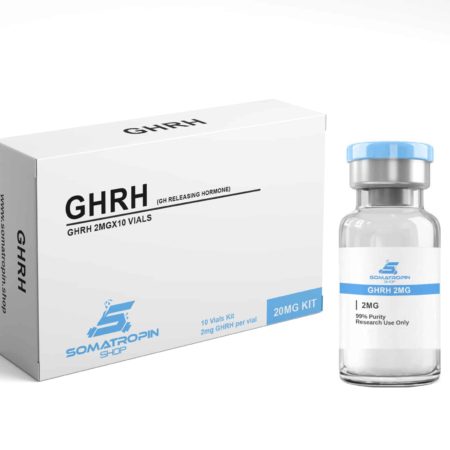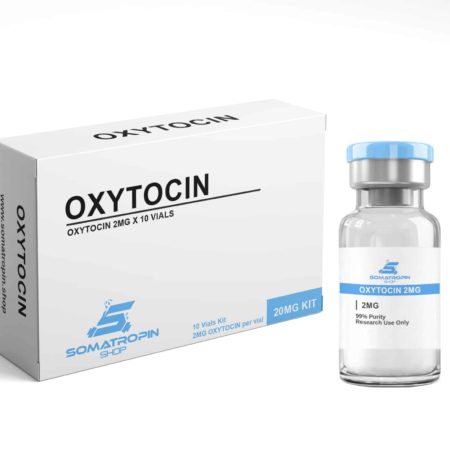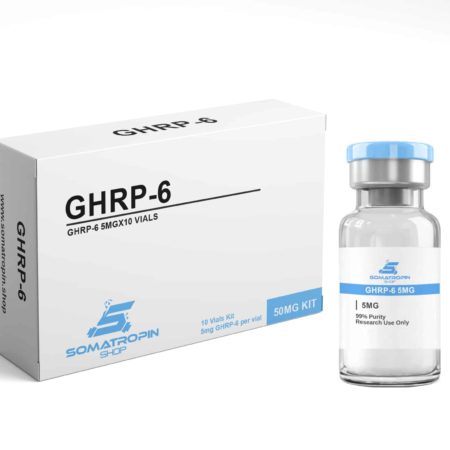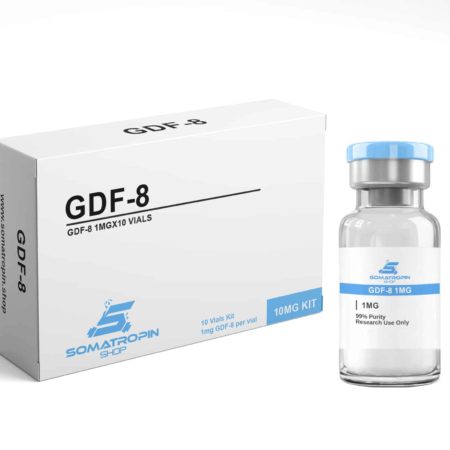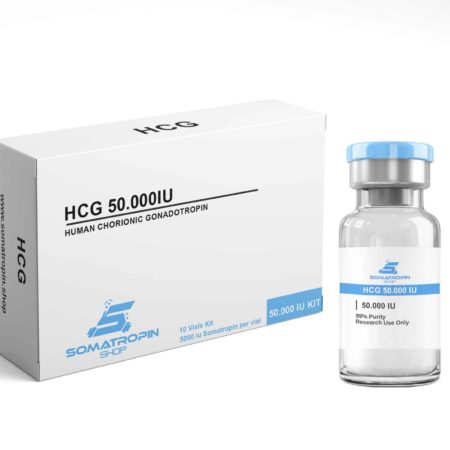PEG-MGF
$199 – $349
PEGylated Mechano-Growth Factor is a modified form of MGF, itself a modified form of IGF-1. Research has shown it to lower cholesterol and total body fat, boost immune function, and improve rates of wound healing.
All Peptides are shipped non labeled
PEG-MGF Overview
Pegylated Mechano-growth factor (PEG-MGF) is a truncated and slightly altered form of insulin-like growth factor 1 (IGF-1). Research shows that it stimulates myoblast (muscle cell) proliferation and differentiation. It has also been explored in research focused on increasing endurance, boosting the function of the immune system, lowering cholesterol, and reducing total body fat. There is also some evidence to suggest that PEG-MGF improves immune function related to healing and could therefore less the time it takes for wounds to heal.
PEG-MGF Structure

Source: ResearchGate
Sequence: : PEG-Suc-Tyr-Gln-Pro-Pro-Ser-Thr-Asn-Lys-Asn-Thr-Lys-Ser-Gln-Arg-Arg-Lys-Gly-Ser-Thr-Phe-Glu-Glu-Arg-Lys-Cys
PubChem CID: : 178101669
Synonyms: : Pegylated MGF, PEG IGF-1 Ec, PEG myotrophin
PEG-MGF Research
PEG-MGF and Skeletal Muscle
Injuries to muscle are common in sports and include everything from strains and sprains to outright avulsion injuries. In many cases, these types of injury require surgical repair. Regardless of the treatment, however, recover tends to be long and results are not always perfect. Research in a mouse model of muscle injury, however, suggests that MGF injected directly into muscle protects the cells by decreasing expression of certain inflammatory hormones, and reducing oxidative stress.
Similar research by Sun et. al. shows that MGF modulates muscle inflammation and improves the recruitment of macrophages and neutrophils to the site of injury. Both studies are based on the previous knowledge that exercise-induced muscle damage stimulates the release of IGF-1Ea and IGF-1Eb, both of which are closely related to MGF.
Studies carried out by an international group of endocrinology researchers reveals that it stimulates the insulin-like growth factor 1 receptor just as much as IGF-1. Stimulation of this receptor has been linked to decreased aging, increased lean body mass, and improved energy homeostasis in humans. This function suggests that PEG-MGF can produce effects similar to IGF-1 leading to improved muscle repair, enhanced fat metabolism, and overall increases in lean body mass.
Research in mice also shows a 25% increase in mean muscle fiber size when it is administered to mice that are exercising. In this study, the MGF was injected directly into the muscle, something that authors Goldspink and Jakeman point out as a serious limitation as the protein would have to be injected into every muscle in which hypertrophy is to be optimized. PEG-MGF solves this particular problem by increasing the plasma half-life of MGF and allowing it to be administered via a single intravenous injection rather than multiple intramuscular injections.
PEG-MGF Research in Heart Muscle Repair
Research carried out in the department of bioengineering at the University of Illinois shows that MGF inhibits the programmed cell death that cardiac muscle cells undergo following hypoxia. Furthermore, the peptide appears to recruit cardiac stem cells to the site of injury and may therefore help in regeneration and healing following heart attack. Rats in the study were administered MGF within eight hours of hypoxia and showed less cell death and greater stem cell recruitment compared to controls that did not receive it.
Dr. Doroudian, lead author of the research, believes that using nanorods to deliver MDF in the setting of heart damage may be an effective way to provide localized, long-term therapy of the bioactive peptide to areas of injury.
Similar research indicates that localized delivery of MGF shows that it can improve cardiac function following heart attack by reducing pathologic hypertrophy. Rats in the study that were treated with PEG-MGF showed better hemodynamics and less cardiac remodeling than untreated rats. Carpenter et. al. have similarly shown that if its injected in the setting of acute myocardial infarction can reduce cardiomyocyte injury by as much as 35%.
Bone Repair and Growth
Research in rabbits indicates that PEG-MGF can increase the rate of bone repair by boosting the proliferation of osteoblasts, the cells that mineralize bone. Rabbits treated with high doses of MGF showed the same level of healing at four weeks that was seen in controls at six weeks. There is hope that this technique can help scientists learn how to promote bone healing and reduce time that people must spend immobilized to allow for healing.
Protecting Cartilage
Research indicates that it can improve the function of chondrocytes, the cells primarily responsible for cartilage health and deposition. Research in mice shows that it enhances the migration of chondrocytes from bone, where the cells develop, into cartilage where they have an effect. This is a perfect setting for PEG-MGF because it could be injected into compromised joint spaces and would remain for long periods of time. A single injection could, in theory, be useful for weeks or even months whereas standard it has an effect limited to minutes or perhaps hours.
Dental Applications
Research in cell cultures of human periodontal ligament cells indicates that PEG-MGF can improve osteogenic differentiation and boost expression of MMP-1 and MMP-2. These factors act to improve repair of the ligaments that attach the tooth to bone and may offer an alternative to too extractions and implants, allowing people to keep their natural teeth after injury. There is even speculation that PEG-MGF may make it possible to save damaged or avulsed teeth after they are surgically re-implanted.
Potential Neuroprotective Effects
Alexander Walker, Editorial Assistant at BioMed Central, has recently reviewed a study exploring the long-term effects of increased levels of MGF in the brain and central nervous system. The study reveals that higher levels of MGF help to reduce the effects of age-related neuron degeneration, resulting in mice that retain their cognitive functions and operate a peak cognitive performance longer into old age. According to Walker, “the efficacy of it in the brain is age-dependent” as mice in the study had improved results both initially and over the long-term if it overexpression occurred earlier in life.
Treatment with it has also been shown to improve muscle weakness and reduce the loss of motor-neurons in mouse models of ALS. According to Dluzniewska et al., MGF is naturally expressed in the brain following hypoxic injury and is over-expressed in regions of the brain where neuron regeneration is greatest. By administering exogenous MGF, it may be possible to reduce the impact of a number of neurological diseases, not by addressing the root cause of the condition, but by preventing the death of neurons in the brain and spinal cord despite the ongoing disease process.
| Dosage | 20mg (2mg x 10 Vials), 50mg (5mg x 10 Vials), 100mg (10mg x 10 Vials) |
|---|
Related Products
AOD-9604 is a modified version of the hGH fragment 176-191 peptide (contains a di-sulfide bridge) and thus a derivative of human growth hormone (hGH). Originally developed as a lipolytic (fat burning) compound, AOD9604 has shown benefit in studies of heart disease, osteoarthritis/cartilage repair, and metabolic syndrome. AOD9604 stimulates lipolysis (the breakdown or destruction of fat) and inhibits lipogenesis in animal studies.
All Peptides are shipped non labeled
All Peptides are shipped non labeled
All Peptides are shipped non labeled
Melanotan 2 (MT-2) is a synthetic analogue of alpha-melanocyte-stimulating hormone. Developed in the 1980s, Melanotan 2 has been shown to increase sexual arousal, reduce compulsive/addictive behavior, curb hunger, and promote lean body mass. Research has shown the peptide to stimulate melanocytes therefore producing increased skin pigmentation and may help to combat autism when used during early childhood development.
All Peptides are shipped non labeled
20mg Kit
2mg X 10 Vials
All Peptides are shipped non labeled
Melanotan (MT-1) It is used clinically, to prevent sun-related skin damage (i.e. phototoxicity) from occurring in people suffering from erythropoietic protoporphyria. Though initially developed as a sunless tanning agent, melanotan 1 has been found to have a number of physiologic effects on blood pressure, feeding behavior, central nervous system function, and more.
100mg Kit
10mg X 10 Vials
All Peptides are shipped non labeled
All Peptides are shipped non labeled
GHRH (Growth Hormone Releasing Hormone)
20mg Kit
2mg X 10 Vials
All Peptides are shipped non labeled
Oxytocin, a natural protein hormone, plays important roles in sexual reproduction, childbirth, bonding between mother and child during breast feeding and wound healing. New research suggests that it may boost cognitive performance, reduce cardiovascular risk, and offset the effects of diabetes.
20mg Kit
2mg x 10 vials
All Peptides are shipped non labeled
GHRP-6 is a synthetic ghrelin/growth hormone secretagogue agonist. It has positive effects on appetite, heart muscle cells, scar formation, and sexual motivation. Animal studies show this orally active growth hormone secretagogue also improves memory function and may help to thwart the neurological effects of Parkinson’s disease.
All Peptides are shipped non labeled
10mg Kit
1mg X 10 Vials
All Peptides are shipped non labeled
Categories
Tags
- 100iu
- anti aging
- anti wrinkles
- bioregulator
- bioregulators
- Bodybuilding
- cjc
- cjc 1295
- cjc1295
- cycle
- fat loss
- genotropin
- gh
- ghrp
- gnrh
- hgh
- human growth
- human growth hormone
- hygetropin
- igf
- igf-1
- ipamorelin
- jenotropin
- kingotropin
- kit
- mgf
- nordictropin
- norditropin
- orals
- pct
- peptide
- peptides
- primo
- Primobolan
- roids
- selank
- semaglutide
- somatropin
- Stanozolol
- steroid
- steroids
- Tesamorelin
- testosterone
- Tirzepatide
- Winstrol

